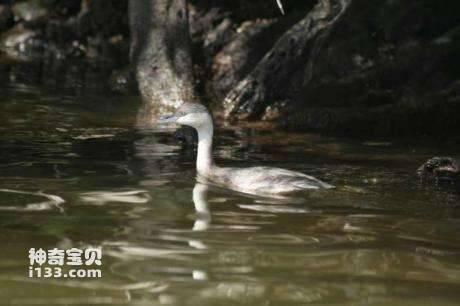Poliocephalus poliocephalus
IUCN
LCBasic Information
Scientific classification
- name:Poliocephalus poliocephalus
- Scientific Name:Poliocephalus poliocephalus,Hoary-headed Grebe
- Outline:Waterfowl
- Family:
Vital signs
- length:No textual research information is available
- Weight:No textual research information is available
- lifetime:No textual research information is available
Feature
Distribution and Habitat
It is found in Australia and New Zealand (including Australia, New Zealand, Tasmania and nearby islands).
Living in freshwater lakes, swamps in the plant cluster, almost life in the water, often cluster living.
Appearance
The grey-headed grebe is a loon. The head and the whole back feathers and wings are gray-black, the neck is gray, and the black beak is straight, flat and pointed; The nostrils are open and located near the base of the mouth; The wings are short, with 12 primary feathers, the first remains, and the fifth secondary feathers missing. The tail has only a few short soft feathers, or almost no feathers. Place your feet near your hips. Flat tarsus, suitable for diving; Each of the four toes has a wide webbed flap; The claws are blunt and broad, the inner edge of the middle toe is serrated, and the back toe is short, higher or absent than the other toes. The body feathers are short and dense, with moisture resistance; Feathers with accessory feathers, caudal lipid gland coverts; Both sexes are similar. The skull was split palatine type and whole nose type. Lacking basal pterygoid process; Lack of cecum in digestive system; Young will grow old.
Details
The grey-headed Grebe (Poliocephalus poliocephalus) is a member of the Grebe family.

Grey-headed grebe is not good at flying. They use their feet instead of wings and rarely walk on the ground. Can dive for food, generally diving only 1 ~ 4m deep. Food is mainly aquatic insects and larvae, crustaceans, mollusks, small fish and grass.
The grey-headed grebe breeds by building floating nests in the grass near the water, made of reeds, weeds, and some clay. Each egg is produced 2 to 7, white, mostly stained by dirt. The male and female incubate the eggs in turn. The eggs hatch for about 25 days. The young are early sex, the body is densely feathered, can move freely, in the chicks hatched 2-3 weeks, the parent birds often put the chicks on the back, frightened diving they are under the wings.
Protect wild animals and eliminate wild meat.
Maintaining ecological balance is everyone's responsibility!








